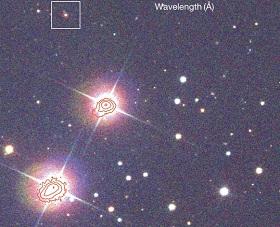The state of smart cities in MENA
11 December 2025
Published online 8 January 2014

In space, the orbital interactions between three bodies have been studied for centuries since they can be used to measure the properties of stars and planets, such as mass and composition, as well as test our theories of gravity. The presence of a neutron star known as a millisecond pulsar, which rotates hundreds of times per second and emits radio waves much as a lighthouse emits light, can be used to study these types of astronomical systems.
So far, the only three-body system discovered with a millisecond pulsar had a companion planet, whose gravitational interactions were too weak to measure properly. Now, a team of international researchers, led by Scott Ransom from the National Radio Astronomy Observatory in Charlottesville, Virginia, and involving Mallory Roberts from the New York University at Abu Dhabi, have discovered a three-body system with a millisecond pulsar and two white-dwarf companions. The inner white dwarf has an orbital period of 1.6 Earth days while the outer one makes a full rotation of the pulsar in almost an Earth year.
The researchers found the system to be coplanar with nearly circular orbits. This unexpected finding suggests a complex and exotic evolutionary pathway that differs from those of known stellar systems. The strong gravitational pull of the outer star could allow researchers to make further measurements and test a key part of the general theory of relativity, the strong equivalence principle, which suggests that the orbital motions of bodies with strong self-gravity are the same as those with weak self-gravity.
doi:10.1038/nmiddleeast.2014.6
Stay connected: